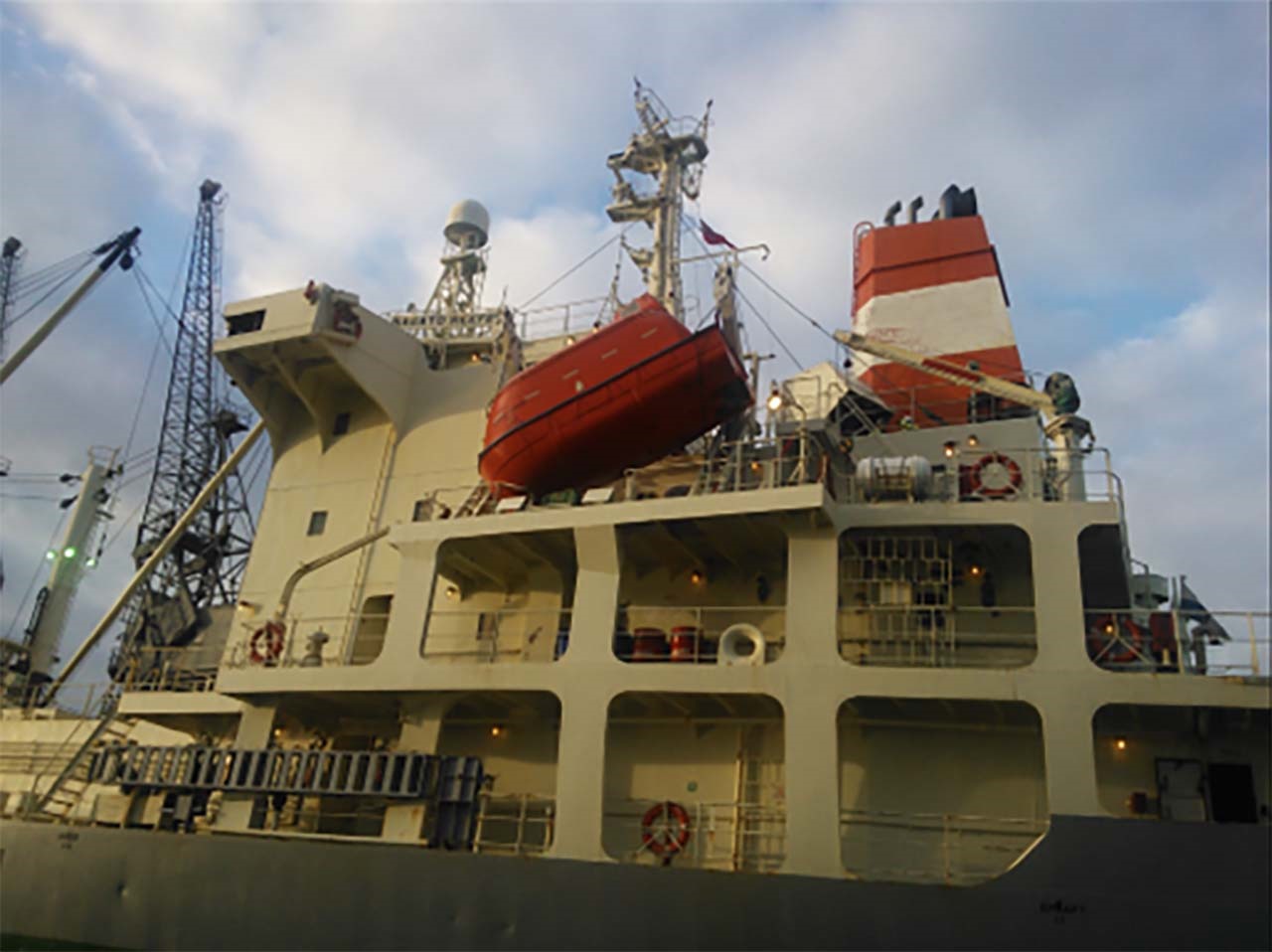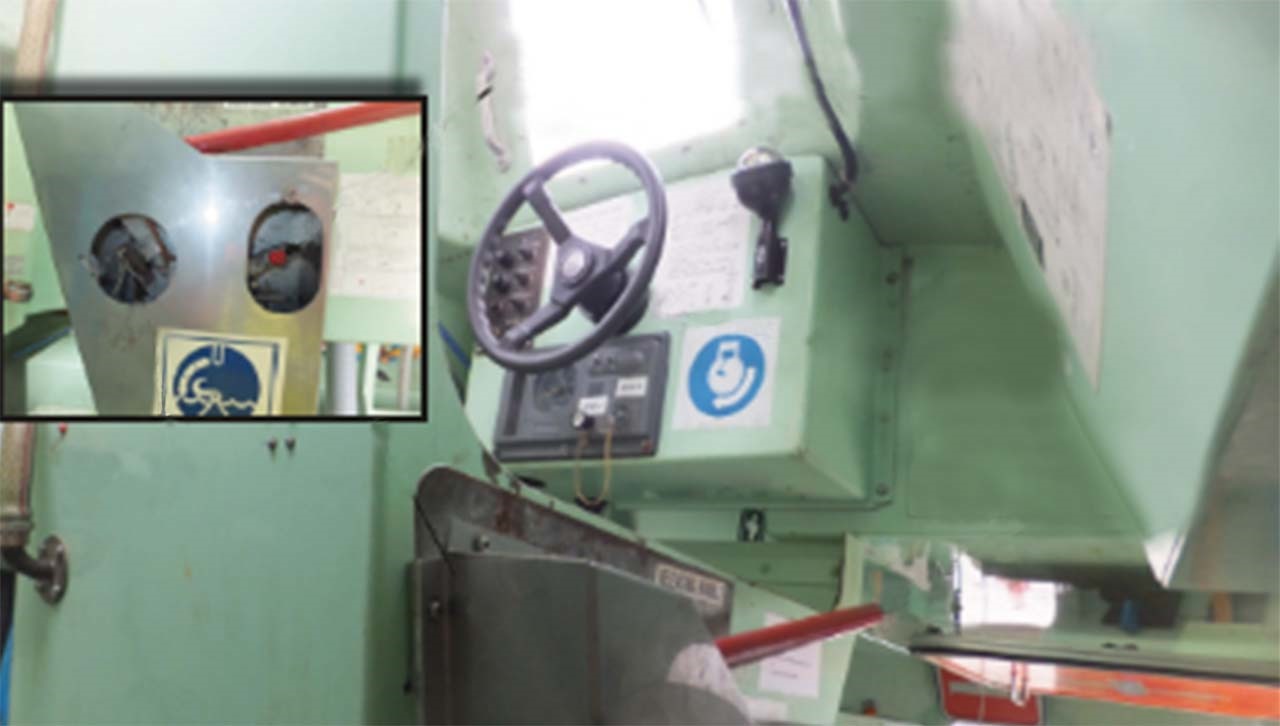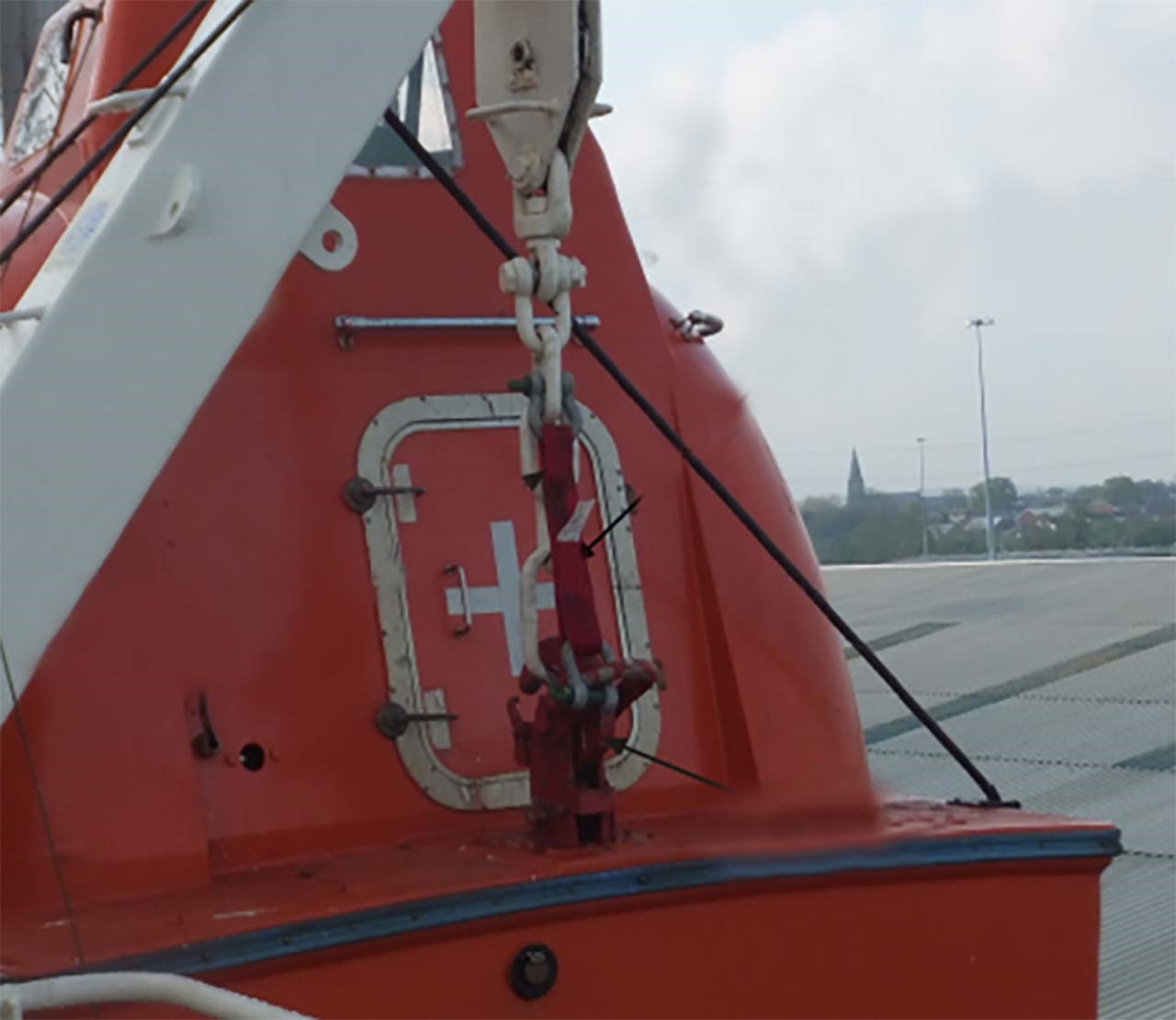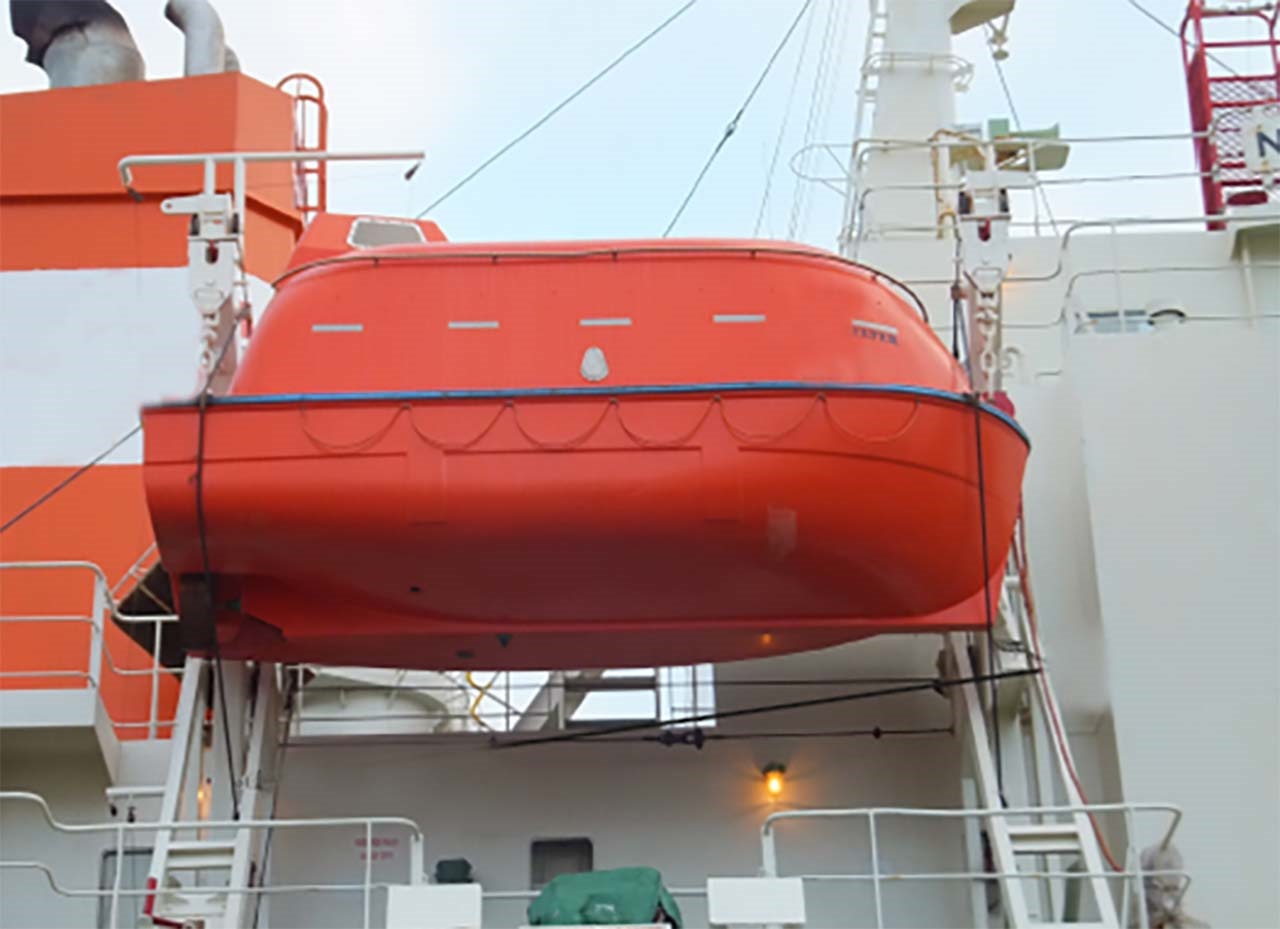A refrigerated cargo ship had berthed in Southampton to discharge a cargo of fruit. On the day of arrival the local port state authorities had boarded the ship in order to conduct a Port State Control (PSC) inspection, which included a lifeboat drill. While securing the lifeboat after the drill, the ship`s bosun sustained minor injuries as the forward end of the lifeboat fell from its davit due to it not being correctly reset when it was hoisted from the water (Figure 1).

Source: Maritime Accident Investigation Branch
WHAT HAPPENED?
During the port stay a Port State Control Officer (PSCO) from the Maritime and Coastguard Agency (MCA) boarded the ship in order to conduct a Port State Control (PSC) inspection. During the inspection the PSCO noted several deficiencies, which included incorrect recording of the crew’s hours of rest and defective fire hydrants.
On the basis of these findings, the PSCO ordered the crew to carry out an abandon ship drill using the port side lifeboat. The chief officer (C/O) was the lifeboat commander and he entered the lifeboat together with five other crew members.
The C/O instructed the crewman operating the lifeboat davit winch on the embarkation deck to release the brake and lower the lifeboat into the water. When the lifeboat was in the water its engine was started and the C/O pulled the hook release handle (Figure 2) to free the boat from the davit suspension links. However, the hooks failed to open. The C/O pulled the release handle again and this time the hooks opened and released the lifeboat from the davit suspension links. The C/O manoeuvred the lifeboat clear of the ship and sailed around before returning and bringing the lifeboat alongside the ship in order to be lifted. During the preparation to be hoisted the lifeboat crew experienced difficulties resetting the hook release gear and two crewmen were required to pull on the hook release handle to force it into a position in which the safety pin could be inserted.
With the lifeboat in position below the davit arms, several attempts had to be made by the lifeboat crew before the davit suspension links were finally connected to the lifeboat hooks. Once engaged, the hooks were checked by the C/O who then instructed the crew to connect the Fall Preventer Devices (FPD) (Figure 3) to the forward and aft hooks. After both FPDs had been secured the lifeboat was lifted from the water, though some of the lifeboat crew were not convinced that the hooks had been correctly reset. When reaching the embarkation deck, all six crewmen disembarked from the lifeboat before it was hoisted into its davit.
The C/O instructed the ship`s bosun and two crewmen to secure the lifeboat. The two crewmen boarded the lifeboat to assist in positioning the gripe wires forward and aft. The bosun instructed the men in the boat not to release the FPDs until he had connected the gripes to the davit arms (Figure 4). The aft gripe had been secured and the bosun was connecting the forward gripe when the C/O came to the lifeboat and instructed the men in the boat to release both FPDs. As soon as the forward FPD shackle pin was removed, the hook opened and the forward end of the boat fell onto the handrails on the deck below (Figure 4), striking and injuring the bosun as it fell.
The emergency services were called and the bosun was taken to a local hospital for medical assessment.

Source: MARITIME ACCIDENT INVESTIGATION BRANCH

Source: MARITIME ACCIDENT INVESTIGATION BRANCH

Source: Maritime Accident Investigation Branch
Lessons Learned
The following lessons learned have been identified. These are based on the information available in the investigation report and are not intended to apportion blame on the individuals or company involved:
- The accident followed a breakdown in communications between the crew who were not empowered to challenge orders or to participate in the decision making process on board.
- The company‘s Safety Management System (SMS) was ineffective and poorly implemented on board. The crew had not been adequately trained and were not familiar with the operation of safety equipment on board. This was further highlighted by the following findings:
-
- The FPDs were fitted to the starboard lifeboat while the ship was on passage rendering the lifeboat inoperable in an emergency, demonstrating a lack of understanding of the correct use of the device.
- The crew’s performance during the fire drill requested by the PSCO was indicative of the poor level of training.
- Following the incident the ship`s safety committee conducted a meeting and recorded that there had been no incidents or near misses on board.
- The manager’s review of the incident identified shortcomings in the crew’s emergency preparedness training but did not create an action plan to improve emergency response standards on its ships.
- The company`s SMS contained comprehensive maintenance schedules for the lifeboats and their on-load release and retrieval systems (LRRS) e.g. inspecting the release gear on a monthly basis. However, the investigation identified that the moving parts of the hook release mechanism on the port lifeboat were dirty and had been painted and the reset indicator had also been painted over.
- Despite records to the contrary, it was apparent that no maintenance or inspections of the LRRS had been carried out since the annual inspection and service six months prior the incident.
For more information on this incident email lossprevention@tindallriley.com.
THE PURPOSE OF THIS CASE STUDY IS TO SUPPORT AND ENCOURAGE REFLECTIVE LEARNING. THE DETAILS OF THE CASE STUDY MAY BE BASED ON, BUT NOT NECESSARILY IDENTICAL TO, FACTS RELATING TO AN ACTUAL INCIDENT. ANY LESSONS LEARNED OR COMMENTS ARE NOT INTENDED TO APPORTION BLAME ON THE INDIVIDUALS OR COMPANY INVOLVED. ANY SUGGESTED PRACTICES MAY NOT NECESSARILY BE THE ONLY WAY OF ADDRESSING THE LESSONS LEARNED, AND SHOULD ALWAYS BE SUBJECT TO THE REQUIREMENTS OF ANY APPLICABLE INTERNATIONAL OR NATIONAL REGULATIONS, AS WELL AS A COMPANY’S OWN PROCEDURES AND POLICIES.

 English
English